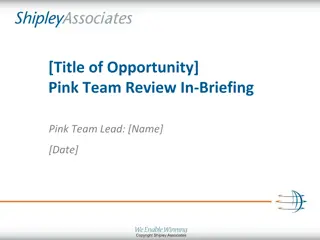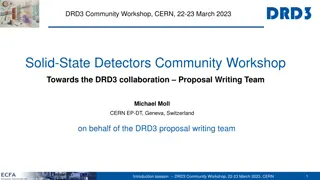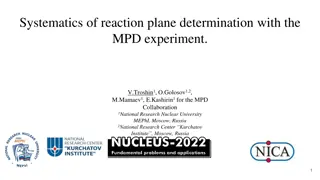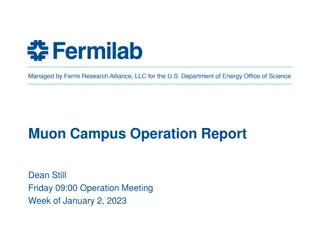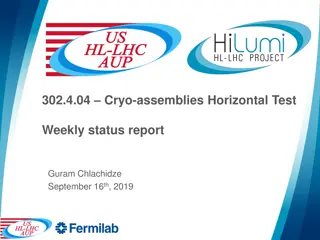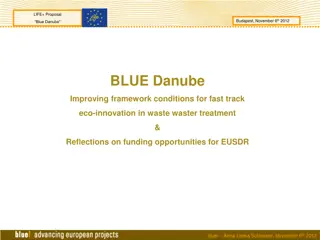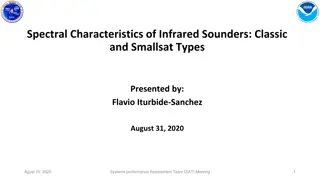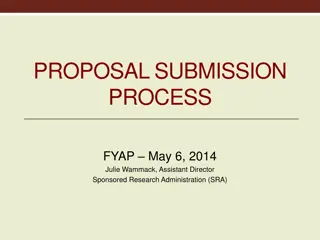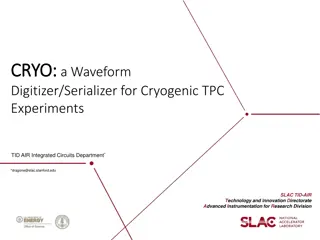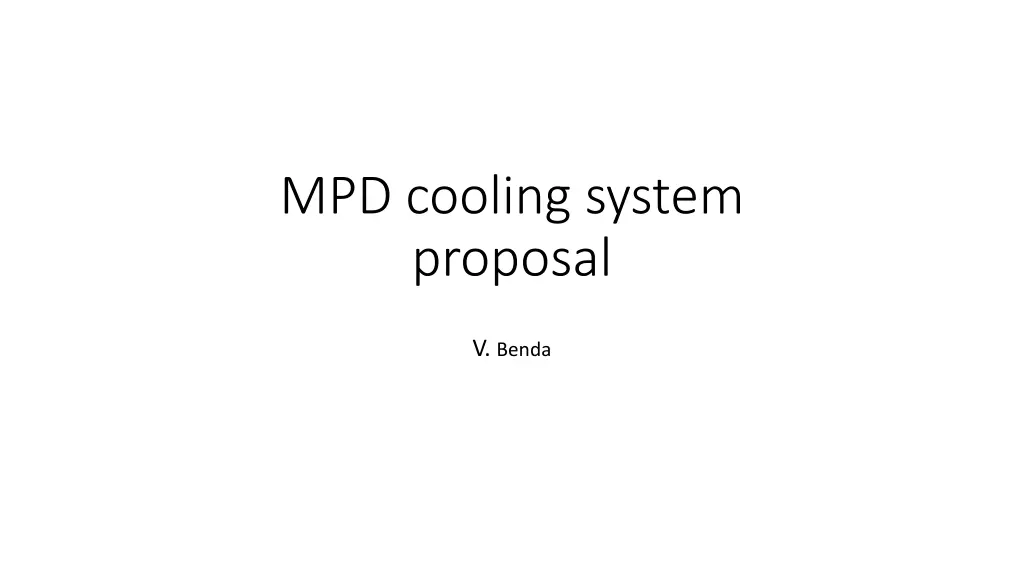
MPD Cooling System Proposals Analysis
Analysis of MPD cooling system proposals, evaluating the use of GHe/LHe versus GN2/LN2 for cooling, considering thermal loads and required cooling power. Recommendations are made for the adoption of GN2/LN2 based on thermodynamic and economic considerations. Various proposals and modifications related to the MPD satellite cooling system are discussed and illustrated.
Download Presentation

Please find below an Image/Link to download the presentation.
The content on the website is provided AS IS for your information and personal use only. It may not be sold, licensed, or shared on other websites without obtaining consent from the author. If you encounter any issues during the download, it is possible that the publisher has removed the file from their server.
You are allowed to download the files provided on this website for personal or commercial use, subject to the condition that they are used lawfully. All files are the property of their respective owners.
The content on the website is provided AS IS for your information and personal use only. It may not be sold, licensed, or shared on other websites without obtaining consent from the author.
E N D
Presentation Transcript
MPD cooling system proposal V. Benda
MPD shield cooling by GHe/LHe or by GN2/LN2? - at nominal Magnet Thermal loads of MPD magnet Current leads Cooling power of Satellite Whole cooling power of the Satellite is required by MPD magnet Shield Thermal load of MPD thermal shield If T1=300K and T2=80K Thermal load of MPD thermal shield If T1=300K and T2=43K, Required flow of LHe m=Q/(Cp x dT)=3000/(5200 x 75)=0.008kg/s=8g/s ~ 160W In case of using LHe for MPD thermal shield cooling extra 160W from the Satellite is required. This extra power is not available. This analysis is done for the normal operation @ 4.5K For cool down of the system, higher cooling power is required Conclusion Original proposal of using GN2/LN2 for cool down/warm up and normal operation is better adopted solution From thermodynamic point of view better and more economic solution (in long term) No new questions which could delay the project will be raised. The LHe solution would have to be discussed and approved by ASG P=82W @ 4.5K PCL=10W PS=100W @ 4.5K reference: 3 1002.00.000 , table 2.4.3.3.1, page 28 reference: 3 1002.00.000 , table 2.4.3.3.1, page 28 reference: ILK-B-1-16-319a_v Q=2200W @ 80K reference: 3 1002.00.000 , table 2.4.3.3.1, page 28 Q=3000W @ 30K estimation T2= Tin(5K)+Tout(80K)/2=42.5K, dT=75K 19.02.2020 MPD cooling proposal 2
MPD satellite, no space on the top plate Modification is difficult, warranty would be lost 19.02.2020 MPD cooling proposal 3
LN2 Cold GN2 To be used for shielding of LHe line #1 MPD control cryostat GN2 Satellite MPD magnet Heater 5kW LN2tanks MFS From CERN By-pass for LN2to be added 5kW LN2 LN2filling 19.02.2020 MPD cooling proposal 4
MFS - magnet flushing station, with Unicos control system For time being not in use at CERN 19.02.2020 MPD cooling proposal 5
Provisional solution LHe line #1 19.02.2020 MPD cooling proposal 6
Location for LN2 and LHe tanks waiting for approval 19.02.2020 MPD cooling proposal 7
LN2 MPD distribution box Satellite MPD magnet (HP GN2 warm) ( ) LN2tanks LN2 filling GN2 cold GN2 warm LN2 19.02.2020 MPD cooling proposal 8
Final LN2 pre-cooling box To be analyzed if this part is necessary 19.02.2020 MPD cooling proposal 9
, if required the provisional LHe solution can stay in place 19.02.2020 MPD cooling proposal 10
Small liquefier MPD requirement Nominal: Cool down/Warm up: 4.34g/s = 129l/h @ 4.5 K 16.2 g/s of GHe T=80K 5K From this point LHe is required, but how much? 19.02.2020 MPD cooling proposal 11
Simplified estimation of required liquefier cooling power for magnet cool down Cool down by satellite From 300K down to 80K indirectly by LN2 From 80K down to 5K by LHe considering that all helium enthalpy is used by means of satellite heat exchanger In this case for cool down of Aluminum from 80K down to 5K is required 0.2l(LHe)/kg(Al) For 14t of magnet 336 kg of LHe is required If we consider cooling speed 1K/h, the required flow of LHe is m=1.2g/s It can be expected that cooling speed below 80K can be much higher (no shrinkage) In this case with Linde liquefier L280 of cooling power 10g/s of LHe, the cooling speed of the magnet would be nearly 10K/h which is fully satisfactory 19.02.2020 MPD cooling proposal 12



